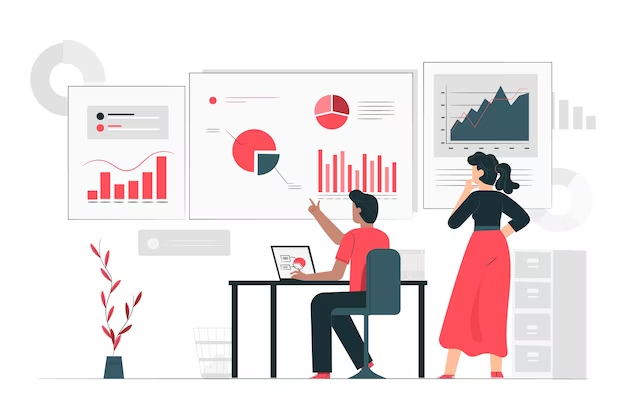Optimization strategies are the methods and techniques that you use to improve your website performance, quality, and efficiency. Optimization strategies can help you enhance your website’s speed, usability, accessibility, security, and SEO.
They can also help you achieve your website’s goals and objectives. Such as increasing traffic, conversion, revenue, retention, and loyalty. But how do you implement these strategies? Therefore, here are some tips and steps that you can follow.
What are Optimization Strategies?
Optimization strategies are the actions and processes that you use to optimize your website for various aspects and factors. That affects your website’s performance, quality, and efficiency.
They involve collecting and analyzing your website’s data, metrics, and feedback. And implementing and testing changes and improvements that can enhance your website’s results and outcomes.
These can be divided into two main categories: on-page optimization and off-page optimization.
On-page optimization refers to the optimization of your website’s content, design, and technical elements. Such as keywords, headings, images, links, loading speed, mobile-friendliness, HTTPS, and more.
Off-page optimization refers to the optimization of your website’s external factors, such as links, citations, mentions, reviews, ratings, and more.
These strategies can have various benefits for your website, such as:
Improving Your Website’s Speed

By optimizing your website’s speed, you can improve your website’s functionality, accessibility, and user experience. You can also improve your website’s SEO. Moreover, speed is one of the ranking factors that search engines use to evaluate and rank your website. You can tools like Google PageSpeed Insights to measure and improve your website’s speed.
Improving Your Website’s Usability
By optimizing your website’s usability, you can improve your website’s interaction and involvement with your visitors. You can also improve your website’s conversion, as usability is one of the factors that influence and motivate your visitors to take action on your website. You can use tools like Hotjar, Crazy Egg, and Google Optimize to measure and improve your website’s usability.
Improving Your Website’s Accessibility
By optimizing your website’s accessibility, you can improve your website’s availability and compatibility with different devices, browsers, and users. You can also improve your website’s SEO, as accessibility is one of the factors that search engines use to evaluate and rank your website. You can use tools like WAVE, AChecker, and Google Lighthouse to measure and improve your website’s accessibility.
Improving Your Website’s Security
By optimizing your website’s security, you can improve your website’s protection and prevention from various threats and attacks, such as malware, hacking, phishing, and more. You can also improve your website’s SEO, as security is one of the factors that search engines use to evaluate and rank your website. You can use tools like Sucuri, Wordfence, and SSL Labs to measure and improve your website’s security.
Improving Your Website’s SEO
By optimizing your website’s SEO, you can improve your website’s visibility and relevance to your target audience and search engines. You can also improve your website’s traffic and reach, as SEO is one of the main sources of organic visitors to your website. You can use tools like Google Analytics, Google Search Console, and Moz to measure and improve your website’s SEO.
How to Implement Optimization Strategies?

Strategic planning is not a one-time project, but an ongoing process that requires constant attention and improvement. However, there are some general steps and best practices that you can follow to implement such strategies effectively. Here are some of them:
Step 1: Define Your Optimization Goals and Objectives
Firstly, define your optimization goals and objectives. You need to have a clear and specific vision of what you want to achieve with your website and how you will measure your success. Some of the common optimization goals and objectives are:
- Increase your website’s speed and loading time
- Enhance your website’s usability and user experience
- Increase your website’s accessibility and compatibility
- Increase your website’s security and protection
- Elevate your website’s SEO and ranking
You should also align your optimization goals and objectives with your overall website goals and objectives, and make sure that they are SMART: specific, measurable, achievable, relevant, and time-bound.
Step 2: Conduct Your Optimization Research and Analysis
The second step goes with conducting your optimization research and analysis. You need to gather and evaluate data and information about your website’s performance, quality, and efficiency.
You also need to identify your website’s strengths and weaknesses, opportunities and threats, and gaps and needs. Some of the common optimization research and analysis methods are:
Data Collection and Analysis
Data collection and analysis is the process of collecting and evaluating your website’s data and metrics, such as speed, usability, accessibility, security, and SEO, using various tools and methods, such as Google Analytics, Google Search Console, and Google Optimize.
Feedback Collection and Analysis
Feedback collection and analysis is the process of collecting and evaluating your website’s feedback and opinions from your users and customers, such as reviews, ratings, testimonials, comments, surveys, and polls, using various tools and methods, such as Google Business Profile, Yelp, Trustpilot, and Hotjar.
Experimentation and Testing
Experimentation and testing is the process of experimenting and testing your website’s changes and improvements by comparing and measuring their results and outcomes, using various tools and methods, such as A/B testing, multivariate testing, and split testing.
By conducting your optimization research and analysis, you can gain insights and ideas that can help you improve your website’s performance, quality, and efficiency.
Step 3: Implement Your Optimization Strategy and Tactics
The third step is to implement your optimization strategy and tactics. You need to apply and execute the changes and improvements that you have planned and prioritized based on your optimization research and analysis. Some of the common optimization strategies and tactics are:
Speed Optimization
Speed optimization is the process of improving your website’s speed and loading time by optimizing your website’s content, design, and technical elements, such as images, videos, fonts, scripts, stylesheets, caching, compression, and more.
Usability Optimization
Usability optimization is the process of improving your website’s usability and user experience by optimizing your website’s layout, structure, navigation, and appearance, such as headings, buttons, links, colors, fonts, and more.
Accessibility Optimization
Accessibility optimization is the process of improving your website’s accessibility and compatibility by optimizing your website’s content, design, and technical elements, such as alt text, captions, transcripts, labels, contrast, zoom, and more.
Security Optimization
Security optimization is the process of improving your website’s security and protection by optimizing your website’s content, design, and technical elements, such as HTTPS, SSL, firewall, malware scanner, backup, and more.
SEO Optimization
SEO optimization is the process of improving your website’s SEO and ranking by optimizing your website’s content, design, and technical elements, such as keywords, meta tags, headings, images, links, schema markup, and more.
By implementing your optimization strategy and tactics, you can enhance your website’s performance, quality, and efficiency.
How to Monitor and Improve Your Optimization Strategies

After optimization, you should monitor and improve your optimization strategies. You need to measure and evaluate your strategies’ performance, quality, and efficiency, and optimize them accordingly. Some of the common methods and tools that you can use to monitor and improve your strategies are:
- Google Analytics: Google Analytics is a web analytics tool that allows you to track and analyze your website’s traffic, behavior, and conversion data. You can use Google Analytics to measure and improve your website’s speed, usability, accessibility, security, and SEO.
- Google Search Console: Google Search Console is a webmaster tool that allows you to monitor and manage your website’s presence and performance on Google search results. You can use Google Search Console to measure and improve your website’s technical, content, and off-page.
- Google Optimize: Google Optimize is a website optimization tool that allows you to create and run experiments and tests on your website’s design, content, and elements. You can use Google Optimize to measure and improve your website’s usability and conversion.
- Hotjar: Hotjar is a user feedback and behavior tool that allows you to collect and analyze your website’s user feedback and behavior data, such as heatmaps, recordings, surveys, and polls. You can use Hotjar to measure and improve your website’s usability and user experience.
- Moz: Moz is an SEO tool that allows you to track and improve your website’s SEO performance and ranking. You can use Moz to measure and improve your website’s keyword, content, and off-page optimization strategies.
By monitoring and improving your strategies, you can ensure that your website is always performing, quality, and efficient. You can also use your optimization strategies to demonstrate your value and credibility to your users and customers and increase your website’s loyalty and retention.
How to Learn and Apply Optimization Strategies

Your work is not done after doing what you can because you also have to keep yourself updated and informed about the latest trends and best practices in optimization strategies. You also need to experiment and practice strategies on your own website or projects. Some of the common ways and resources that you can use to learn and apply these are:
- Blogs and articles: Blogs and articles are the most common and accessible sources of information and knowledge about optimization strategies. You can read blogs and articles from various websites and platforms, such as Moz, HubSpot, Neil Patel, and more, to learn and apply optimization strategies.
- Books and ebooks: Books and ebooks are the most comprehensive and in-depth sources of information and knowledge about optimization strategies. You can read books and ebooks from various authors and publishers, such as Steve Krug, Brian Dean, Rand Fishkin, and more, to learn and apply optimization strategies.
- Courses and tutorials: Courses and tutorials are the most interactive and practical sources of information and knowledge about optimization strategies. You can take courses and tutorials from Udemy, Coursera, Lynda, and more.
- Podcasts and videos: Podcasts and videos are the most engaging and entertaining sources of information and knowledge about optimization strategies. You can listen to podcasts and watch videos from various websites and platforms, such as YouTube, Spotify, Google Podcasts, and more, to learn and apply optimization strategies.
- Webinars and events: Webinars and events are the most timely and relevant sources of information and knowledge about optimization strategies. You can attend webinars and events from various websites and platforms.
By learning and applying optimization strategies, you can enhance your skills and knowledge in optimization strategies. You can also discover new and innovative ways to optimize your website and achieve your goals and objectives.
How to Hire a Professional Web Design Company for Optimization Strategies
If you want to save your valuable resources, you can hand all this work to professionals. These professionals will make sure you get the best value for the price you pay.
However, if you want to hire a professional web design company for optimization strategies, you need to choose the right one for your website and business. Here are some tips and factors that you can consider when hiring one:
Portfolio and Testimonials
You should check their portfolio and testimonials to see their previous and current work and projects, and their feedback and reviews from their clients and customers. You should look for their experience and expertise in optimization strategies, and their results and outcomes for their clients and customers.
Services and Prices
You should check their services and prices to see what they offer and how much they charge for their services. Look out for their scope and quality of services, and their value and affordability of prices. Compare their services and prices with other web design companies to see their competitiveness and suitability for your website and business.
Communication and Collaboration
Make sure to look after how they communicate and collaborate with you and your team. You should look for their availability and responsiveness, their clarity and transparency, and their flexibility and adaptability. You should also check their communication and collaboration tools and methods, such as email, phone, chat, video, and more.
Guarantee and Support
Another thing you shouldn’t forget to check is, how they guarantee and support their strategies for your website and business. You should look for their warranty and refund policy, their maintenance and update service, and their customer service and technical support. You should also check their guarantee and support terms and conditions, such as duration, frequency, and cost.
By hiring professional web design services, you can optimize your website for performance, quality, and efficiency. You can also optimize your website for your goals and objectives, and grow your business online.
If you are looking for a professional web design company for optimization strategies, you can contact us.
We are a web design company that specializes in creating and optimizing websites for optimization strategies. We can help you create a stunning and efficient website that reflects your brand identity and value proposition and attracts and converts your ideal customers. Contact us today and let us help you take your optimization strategies to the next level.

